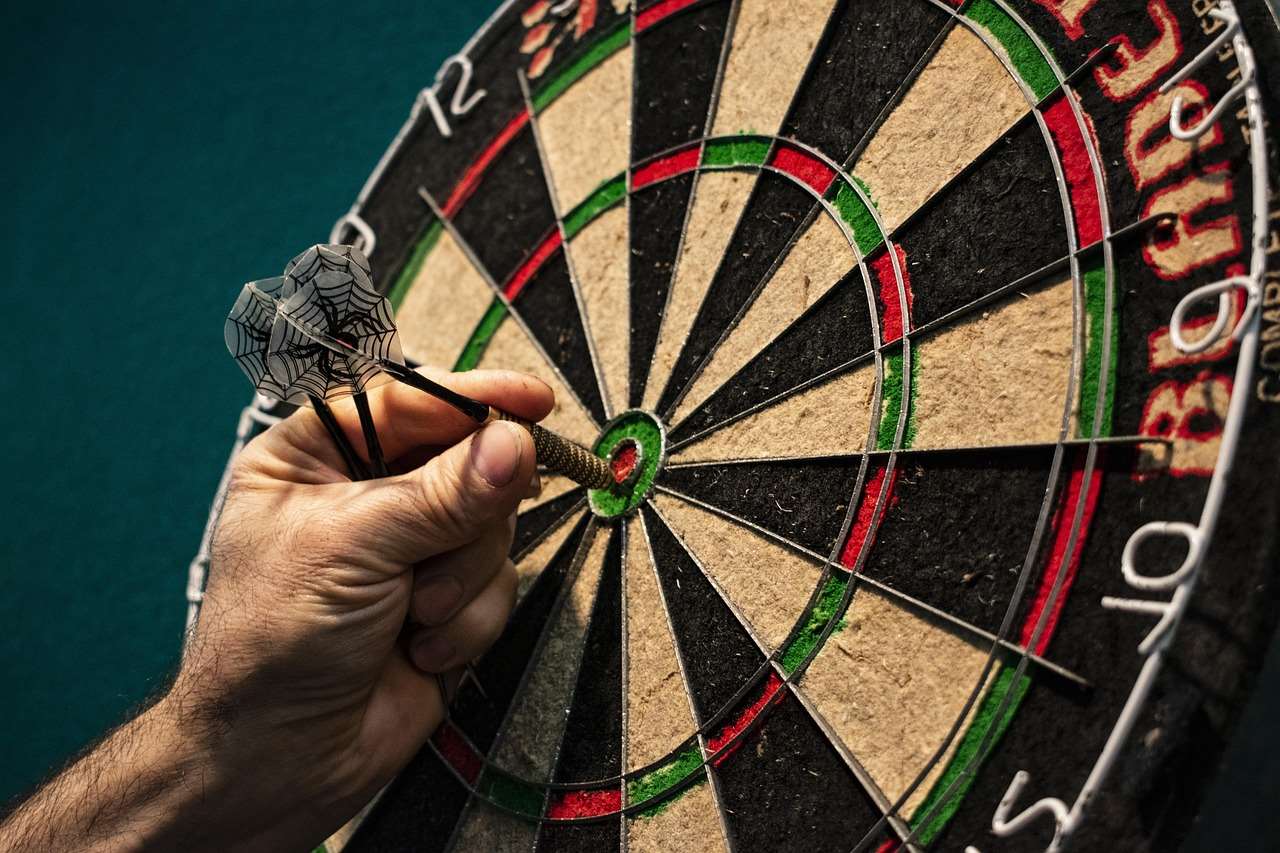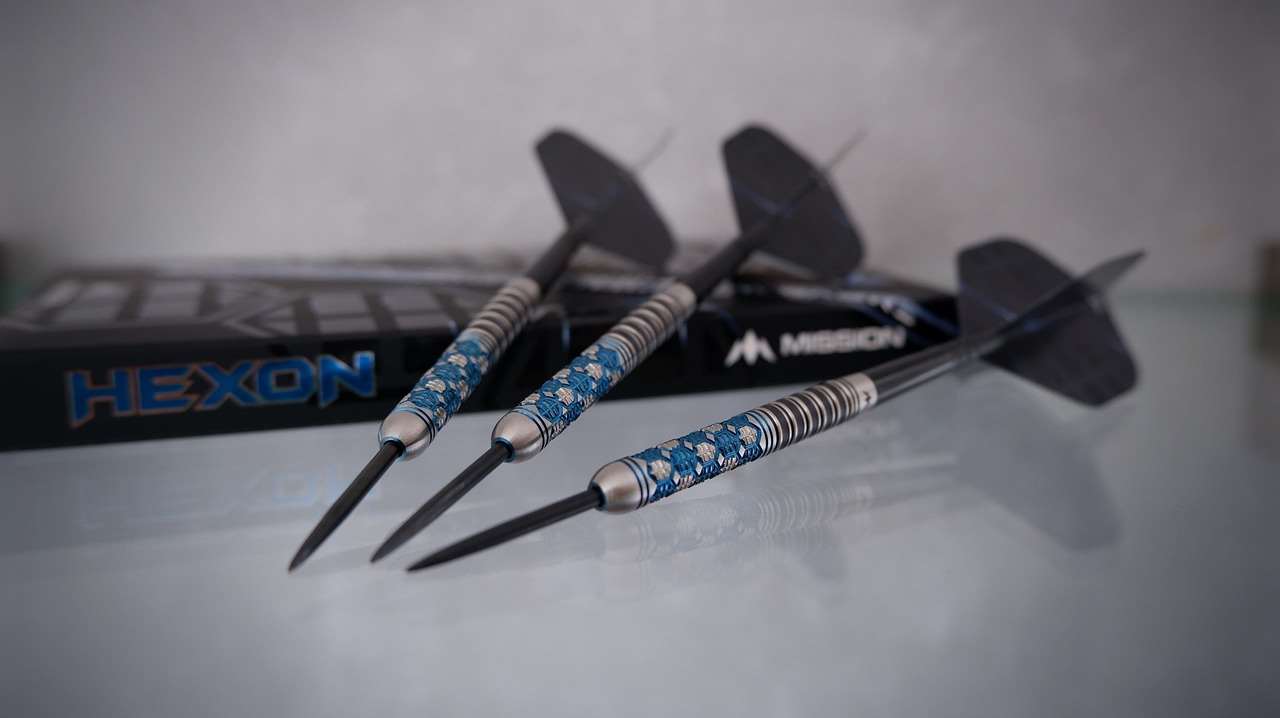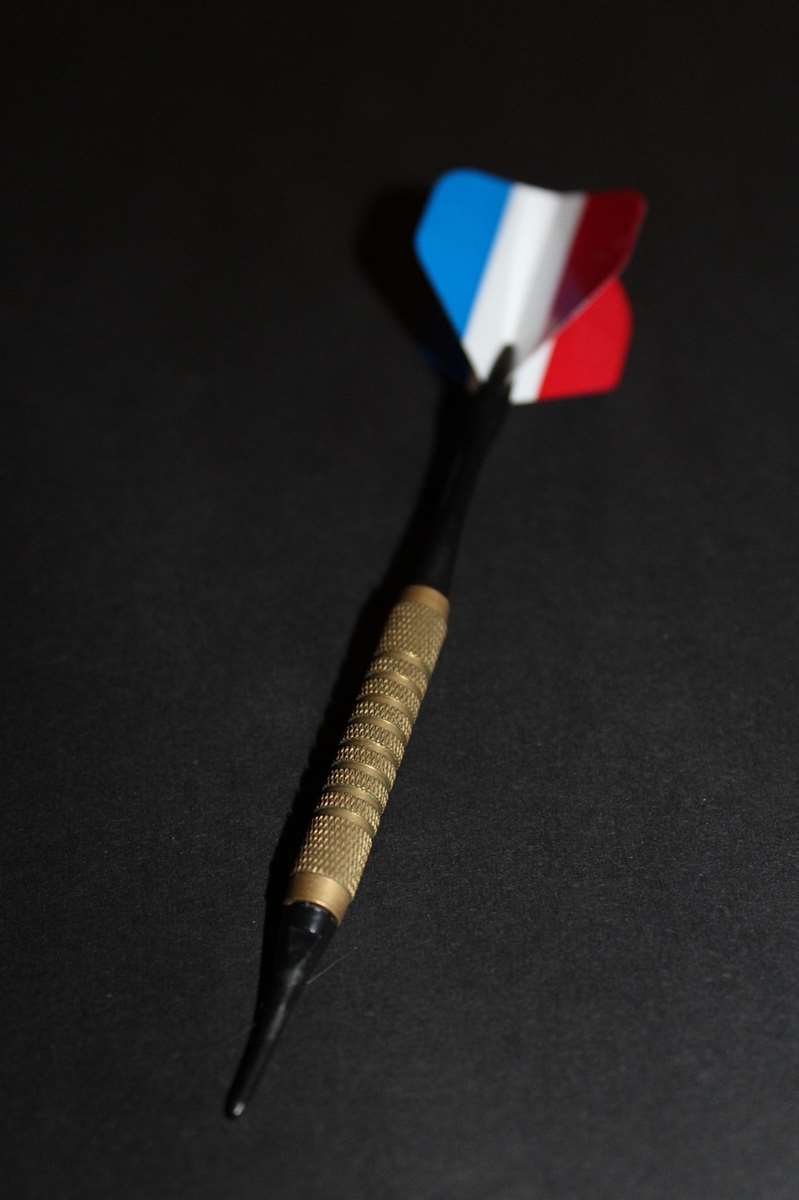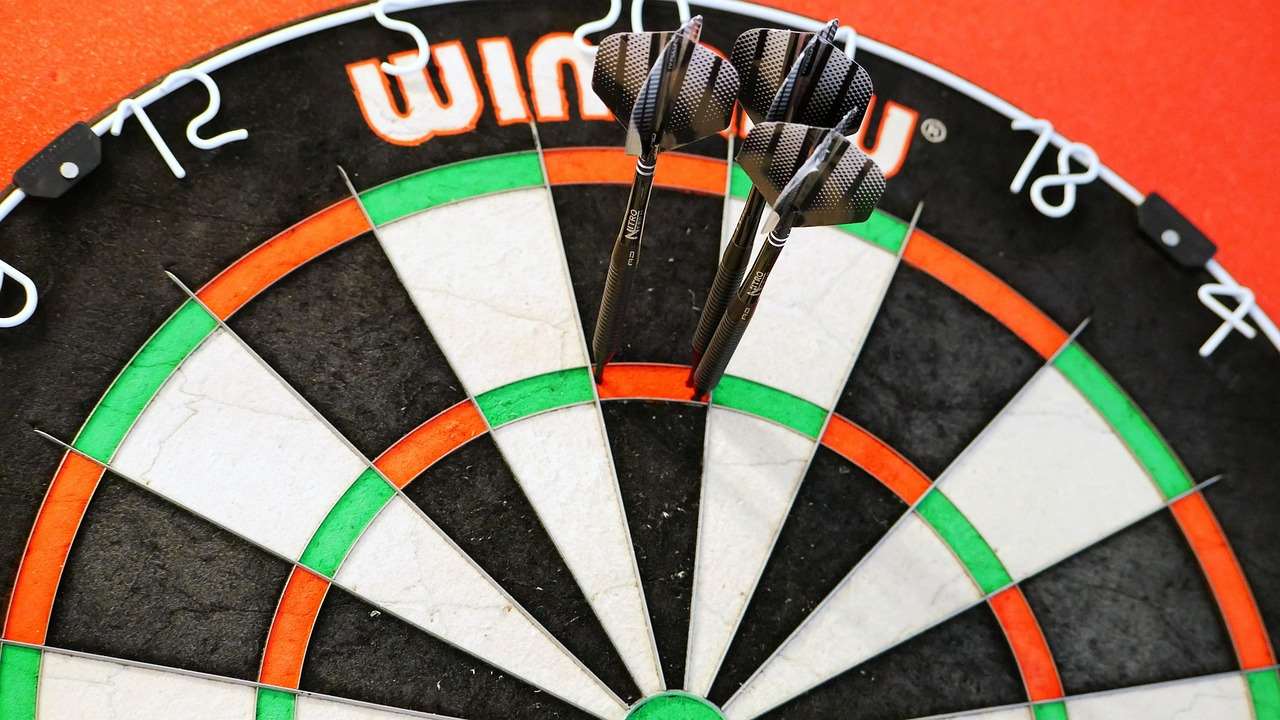Darts sponsorship conflict resolution hinges on clear contracts, open communication, and established protocols for handling competing interests; proactively addressing potential conflicts upfront is key. This article will explore the common causes of sponsorship clashes in darts, outline strategies for preventing them, and provide steps for effectively resolving issues when they arise.
⚠️ Still Using Pen & Paper (or a Chalkboard)?! ⚠️
Step into the future! The Dart Counter App handles all the scoring, suggests checkouts, and tracks your stats automatically. It's easier than you think!
Try the Smart Dart Counter App FREE!Ready for an upgrade? Click above!
Understanding the Landscape of Darts Sponsorship
The world of professional darts is becoming increasingly lucrative, attracting significant corporate sponsorship. These sponsorships can range from headline agreements covering entire tournaments to individual player endorsements. This influx of money is fantastic for the sport, but it also increases the likelihood of sponsorship conflicts. It’s important to understand the different types of sponsorships and the potential areas where overlaps or contradictions might occur. For example, a tournament sponsored by a beer brand might clash with a player individually sponsored by a non-alcoholic beverage company.
Ambush marketing is also a growing concern. This occurs when a company attempts to associate itself with an event without actually being an official sponsor. This can be done through various means, such as running advertising campaigns that coincide with the tournament or setting up promotional activities near the venue. Addressing ambush marketing requires vigilance and a clear legal framework.

Common Causes of Darts Sponsorship Conflict
Several factors contribute to sponsorship conflicts in darts. Here are some of the most prevalent:
- Overlapping Categories: This is perhaps the most common issue. For instance, two companies in the beverage industry (one alcoholic, one non-alcoholic) might both sponsor different aspects of the same event.
- Conflicting Values: A sponsor’s brand image might clash with the values of a player or the overall image of the tournament. For example, a gambling company sponsoring a youth darts competition could be problematic.
- Ambiguity in Contracts: Vague contract language can lead to misunderstandings about exclusivity rights and permitted activities.
- Lack of Communication: Failure to communicate effectively between sponsors, players, and tournament organizers can exacerbate existing tensions.
- Geographical Conflicts: Sponsors may have regional exclusivity agreements, leading to conflicts when events are held in specific locations. Considering darts tourism boost local area, these geographical conflicts could impact event revenue.
Furthermore, the rise of digital marketing and social media adds another layer of complexity. Players often have their own social media channels where they promote their sponsors, which could potentially conflict with the sponsors of the tournament or league. Managing these digital relationships requires careful planning and clear guidelines.
Preventative Measures: A Proactive Approach to Sponsorship Harmony
The best way to deal with darts sponsorship conflict resolution is to prevent it from happening in the first place. A proactive approach can save time, money, and reputational damage. Here are some key strategies:
- Thorough Due Diligence: Before entering into any sponsorship agreement, conduct thorough due diligence on all parties involved. This includes researching their brand values, existing sponsorships, and potential conflicts of interest.
- Clear and Comprehensive Contracts: Draft detailed contracts that clearly define the scope of the sponsorship, exclusivity rights, permitted activities, and procedures for resolving disputes. Use precise language to avoid ambiguity. The Business of Darts relies on solid agreements.
- Open Communication Channels: Establish open lines of communication between all parties involved, including sponsors, players, tournament organizers, and their respective legal teams. Regular meetings and updates can help identify and address potential conflicts early on.
- Defined Conflict Resolution Protocols: Outline specific steps for resolving sponsorship conflicts in the contract itself. This might include mediation, arbitration, or other forms of dispute resolution.
- Category Exclusivity: Offer sponsors category exclusivity to minimize the risk of overlapping interests. Clearly define what constitutes a “category” to avoid future disputes.
- Brand Guidelines: Develop and enforce clear brand guidelines that all sponsors must adhere to. This helps ensure consistency and prevents conflicts related to brand image.
Darts Sponsorship Conflict Resolution: A Step-by-Step Guide
Despite preventative measures, sponsorship conflicts can still arise. When they do, it’s important to have a clear and efficient process for resolving them. Here’s a step-by-step guide:
- Identify the Conflict: The first step is to accurately identify the nature and scope of the conflict. Gather all relevant information and documentation.
- Communicate Openly: Encourage open and honest communication between all parties involved. Create a safe space for everyone to express their concerns and perspectives.
- Review the Contract: Carefully review the sponsorship contract to determine the rights and obligations of each party. Pay particular attention to clauses related to exclusivity, conflict resolution, and termination.
- Mediation: Consider using mediation to facilitate a mutually agreeable solution. A neutral third-party mediator can help guide the discussion and find common ground.
- Arbitration: If mediation fails, arbitration may be the next step. In arbitration, a neutral arbitrator hears evidence from both sides and makes a binding decision.
- Legal Action: As a last resort, legal action may be necessary to enforce the terms of the sponsorship contract.
- Document Everything: Keep detailed records of all communications, meetings, and decisions made throughout the conflict resolution process.
Remember that preserving relationships is often crucial, even during conflict. Aim for solutions that are fair to all parties and minimize damage to the reputation of the sport and the brands involved. Consider the wider darts impact local economy study; preserving darts’ image benefits everyone.

The Role of Governing Bodies in Resolving Sponsorship Disputes
Governing bodies like the Professional Darts Corporation (PDC) and the World Darts Federation (WDF) play a significant role in regulating the sport and ensuring fair play. They often have their own rules and regulations regarding sponsorship, which can help prevent and resolve conflicts. These organizations can provide guidance, mediate disputes, and enforce sanctions against those who violate sponsorship agreements. They often implement policies addressing intellectual property rights and enforce them.
It’s important for sponsors, players, and tournament organizers to be aware of the governing body’s rules and regulations regarding sponsorship. Compliance with these rules can help minimize the risk of disputes and ensure a level playing field for all.

Darts Sponsorship and Ethical Considerations
Beyond legal contracts and regulations, ethical considerations also play a role in darts sponsorship conflict resolution. Sponsors, players, and tournament organizers have a responsibility to act ethically and responsibly, even when it’s not explicitly required by the contract. This might involve avoiding sponsorships that promote harmful products or activities, or ensuring that sponsorships are consistent with the values of the sport. For example, there might be debate about a sponsor whose primary business is online gambling. Transparency with stakeholders is essential, and helps build trust and avoids conflicts.
It’s crucial to remember that darts is a sport enjoyed by people of all ages. Sponsors should be mindful of the impact their advertising and promotional activities have on young people. Promoting responsible gambling and avoiding the targeting of minors are important ethical considerations.
Adapting to the Evolving Sponsorship Landscape
The world of sponsorship is constantly evolving, with new technologies and marketing strategies emerging all the time. It’s important for those involved in darts sponsorship to stay informed about these changes and adapt their strategies accordingly. The increasing importance of eSports and digital integration cannot be ignored.
One key area to watch is the growth of social media and influencer marketing. Players are increasingly using their social media platforms to promote their sponsors, and this can create both opportunities and challenges. It’s important to have clear guidelines and policies in place to manage these relationships effectively and prevent conflicts of interest.

Case Studies: Learning from Past Darts Sponsorship Conflicts
Analyzing past darts sponsorship conflicts can provide valuable lessons for preventing and resolving future disputes. By examining specific cases, we can identify common pitfalls, understand the consequences of poor conflict resolution, and learn from best practices. These case studies can illustrate the importance of clear contracts, open communication, and ethical considerations.
While specific details of individual cases are often confidential, general trends and lessons learned can be extracted. For example, a case involving a conflict between two beverage sponsors might highlight the importance of clearly defining category exclusivity in the contract. Or a case involving a dispute over brand image might underscore the need for thorough due diligence before entering into a sponsorship agreement. Considering the how darts events help pubs bars, sponsorship conflicts could impact bar revenues too.

Future Trends in Darts Sponsorship
The future of darts sponsorship is likely to be shaped by several factors, including the continued growth of the sport, the increasing importance of digital marketing, and the evolving regulatory landscape. We can expect to see more sophisticated sponsorship deals that incorporate digital activation, data analytics, and personalized marketing. We might also see an increase in the use of virtual advertising within televised darts events.
Furthermore, there’s likely to be a greater focus on sustainability and social responsibility in sponsorship agreements. Sponsors may be required to demonstrate their commitment to environmental protection, community engagement, and ethical business practices.
Conclusion: Mastering Darts Sponsorship Conflict Resolution
Darts sponsorship conflict resolution is a complex but crucial aspect of the sport’s continued growth and success. By understanding the common causes of conflicts, implementing preventative measures, and establishing clear resolution protocols, all parties involved can minimize the risk of disputes and ensure that sponsorship relationships are mutually beneficial. Open communication, ethical considerations, and a willingness to adapt to the evolving sponsorship landscape are essential for navigating the challenges and opportunities ahead.
Remember, proactive management and a focus on collaboration will always be more effective than reactive firefighting. By embracing these principles, the darts community can foster a vibrant and sustainable sponsorship ecosystem that benefits the sport, its players, and its fans.
Ready to elevate your understanding of the darts business? Explore our resources on the Business of Darts for more insights.
Hi, I’m Dieter, and I created Dartcounter (Dartcounterapp.com). My motivation wasn’t being a darts expert – quite the opposite! When I first started playing, I loved the game but found keeping accurate scores and tracking stats difficult and distracting.
I figured I couldn’t be the only one struggling with this. So, I decided to build a solution: an easy-to-use application that everyone, no matter their experience level, could use to manage scoring effortlessly.
My goal for Dartcounter was simple: let the app handle the numbers – the scoring, the averages, the stats, even checkout suggestions – so players could focus purely on their throw and enjoying the game. It began as a way to solve my own beginner’s problem, and I’m thrilled it has grown into a helpful tool for the wider darts community.